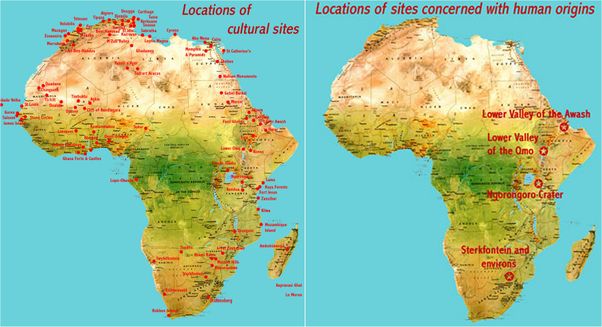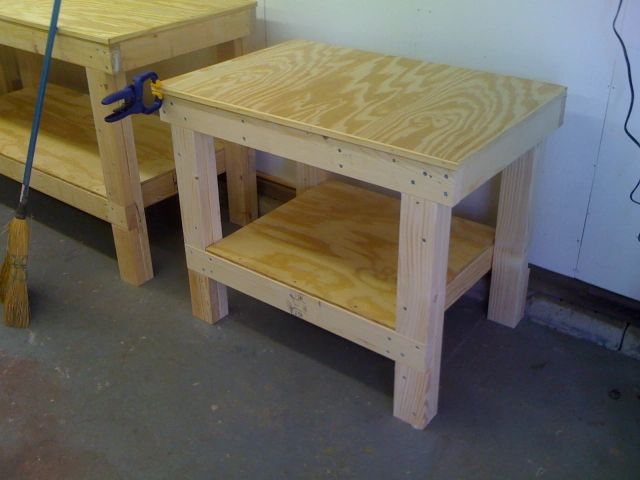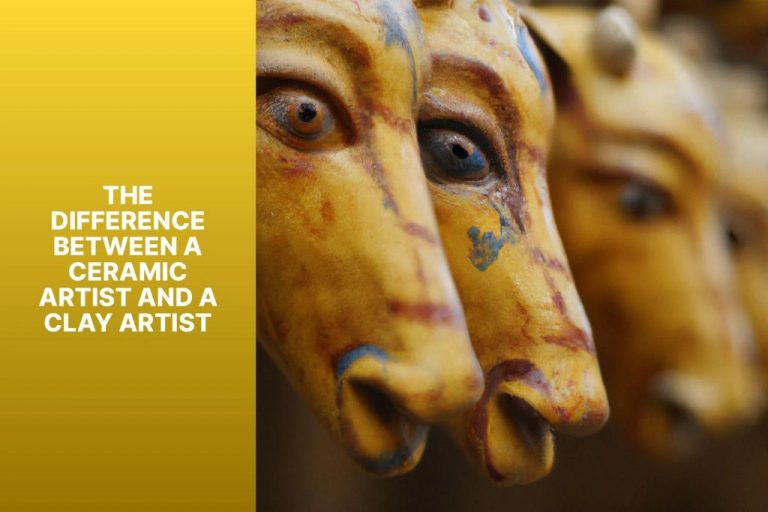What Is The Oldest Known Pottery In The World?
Pottery is one of the most ancient and widespread technologies known to humankind. The oldest known pottery has been found at archaeological sites dating back over 20,000 years. Traces of clay vessels from before the Neolithic period demonstrate that pottery originated even before the advent of agriculture and sedentary lifestyles. This brief overview article will examine the earliest evidence of pottery from across the world, looking at key finds in East Asia, Africa, Europe and the Americas. It will touch on the materials and methods used in the very first pottery, and discuss the significance of these early clay vessels in human history.
Definition of Pottery
Pottery refers to objects made out of clay that have been shaped and then hardened through firing at high temperatures. Pottery is one of the oldest human inventions, dating back to the Neolithic period over 12,000 years ago [1]. The most common types of pottery have porous bodies that absorb liquids.
Pottery can be defined as objects made of clay and permanently hardened by heat. The clay is formed into objects using a variety of techniques like coiling, slab building, pinching, wheel throwing, and casting. Once shaped, the clay objects are fired in a kiln at temperatures typically ranging from 600°C to 1200°C. The firing permanently hardens the clay through sintering and can change the color and texture of the clay as well.
Characteristics of pottery include the clay body, glazes or surface treatments, firing method, decoration, and purpose. The color and texture of the clay can vary widely depending on the mineral content. Pottery can be glazed to make it less porous and add decorative colors and textures. Firing technique affects the hardness and other material properties. Pottery is often painted with slips or ornamented before firing. Finally, pottery serves a variety of purposes from cooking pots and vessels to sculptures and art.
Earliest Evidence of Pottery
The earliest evidence of pottery making dates back 20,000-19,000 years ago to East Asia, specifically China. Excavations in the Xianrendong Cave in the Jiangxi Province of south-central China uncovered fragments of the earliest known pottery along with remains of plants and animals (Source 1). The pottery was made of clay, minerals and plant remains that were fired at low temperatures in open fires or primitive kilns. Analysis showed the pottery was used primarily for cooking food. This marks the beginning of more sedentary lifestyles in human prehistory as people remained in areas near the resources needed for pottery production.
Other early evidence of pottery making has been found in Japan dated to 16,500-14,920 years ago and in Russian Siberia dating back 19,000-18,000 years ago. However, the pottery fragments found in China remain the oldest confirmed evidence. The discovery in China coincides with the development of agriculture in the region, suggesting pottery production emerged as a way to store and prepare the new food sources being cultivated (Source 2).
Origins in East Asia
Some of the earliest evidence of pottery was discovered in East Asia, particularly China and Japan. In China, pottery fragments found in the Xianrendong Cave in southern China have been dated to 20,000-19,000 years ago. These early pots were made from clay, fiber tempers, and charcoal heating. Similar pottery pieces dating 18,000-17,000 years old were found at another Chinese site called Yuchanyan Cave. In Japan, pottery fragments found at the Odai Yamamoto I site have been dated to 16,500-14,700 years ago.
Early pottery from East Asia was primarily used for cooking food rather than for storage. The development of pottery in this region coincided with a shift toward more intensive plant processing and cooking. The creation of pottery helped enable people to process and consume starchy plants more efficiently. East Asia has abundant clay resources which helped drive early pottery production. The oldest known pots are crudely made and simple but over thousands of years pottery techniques and artistry advanced significantly across ancient China and Japan.
Origins in Africa

Some of the earliest known pottery originated in Africa during the 10th millennium BC. In 2007, a Swiss-led team of archaeologists discovered pieces of pottery in central Mali, West Africa that dated back to 9,400 BC (1). This pottery was found in excavations at Ounjougou near the Dogon country. The pottery fragments found there are believed to be the oldest known pottery in Africa.
Analysis shows that the pottery was made from local materials, including clay from termite mounds. The pottery pieces were relatively small and undecorated functional vessels. These early potters used the “coiling” technique, building up the vessel shape with rope-like coils of clay. Firing techniques were basic, done in an open fire. The discovery provides evidence of some of the earliest human settlement and food production in Africa’s Sahel region.
Some scholars believe pottery was independently invented in Africa. Ceramics may have helped early African societies with food storage and cooking, contributing to the transition away from purely hunter-gatherer lifestyles toward permanent settlements. Further research is still needed to better understand the origins and spread of pottery technology across Africa.
(1) https://www.oyelakindinners.com/pages/what-they-didnt-tell-you-about-african-dinnerware
Origins in Europe
The oldest known pottery from Europe comes from archaeological sites in the Balkan peninsula, dating back to the 7th millennium BC. Sites like Starčevo in Serbia and Vinča in Serbia and Romania provide evidence of some of the earliest ceramic vessels in the world.
The Starčevo culture produced crude, low-fired pottery as early as 6500 BC [1]. These early vessels were made from unfired clay and plant materials. The designs were simple but included incised lines, dots, and geometric patterns.
The Vinča culture, arising around 6000 BC, produced more advanced ceramic forms including bowls, jars, and ritual vessels [1]. These vessels were higher fired and made on a pottery wheel. Complex designs like spirals and meanders adorned these early European ceramics.
Early pottery from Europe shows some of the first evidence of agriculture, settled village life, and emerging Neolithic technologies. The Balkans served as an important region connecting the spread of pottery west into Europe and throughout the Mediterranean.
Origins in the Americas
The earliest known pottery from the Americas dates back over 5,000 years ago. Archaeological evidence indicates that pottery first emerged among indigenous cultures in South America and spread northward over time. The Valdivia culture in Ecuador produced ceramic pottery as early as 3500 BCE, representing the oldest known pottery traditions in the Western Hemisphere. In North America, the earliest known pottery comes from the Stallings culture along the Savannah River in Georgia, dating back 4500 years ago. Indigenous peoples across the Americas developed their own unique styles of pottery using locally available materials like clay and plant fibers. Pottery artifacts provide insight into the lives and cultures of early inhabitants. The advent of pottery enabled more effective food storage and cooking, artistic expression, and trade among groups.
Pottery Materials and Methods
The earliest known pottery was made from basic materials found in nature, including clay, minerals, and water. Archaeological evidence shows that the first pottery was made using the coil technique, which involves rolling ropes of clay into long coil shapes and then stacking them to form the vessel walls. The coils were then blended together using fingers or simple tools. Early potters selected their clay based on plasticity, choosing clays high in minerals that prevent cracking and add strength when fired. Tempering materials like sand, crushed shells, or fiber were added to improve the quality of the raw clay.
Early pottery artifacts show that open firing or bonfire firing was likely used at first. The pottery was placed directly within hot coals or adjacent to a fire to harden the clay through heating it up to 600-800°C. Over time, potters gained more control over the firing process and were able to reach higher temperatures by using oval or beehive-shaped kilns built from clay or mudbrick. Primitive firing technology meant that early pottery was quite thick and porous.
Decorating techniques were also very rudimentary in the beginning. Incising patterns by dragging tools through the wet clay was common. Early pots were often left undecorated with only basic shaping of the vessel. Glazes were not used on very early pottery. The first glazes made from plant ash and minerals emerged later as potters advanced their skills and technology.(Source)
Significance of Early Pottery
The development of early pottery had a significant impact on ancient cultures and societies. Pottery allowed for new methods of cooking, storage, and transport of food and liquids. According to research, “responsible for the appearance or the significance of early pottery for the societies that used it. Further research on the detailed reconstruction of pottery technology and the contexts of early pottery use is still required to fully understand its role and importance in the prehistoric societies” (The Earliest Ceramics in the New World).
The ability to fire and harden clay into pottery vessels provided more durable, versatile containers compared to older materials like woven baskets or wooden vessels. Pottery could withstand heat, making it ideal for cooking food over fire. The vessels could also be used to store and transport food, water, oils, and other liquids securely. Hard pottery was less prone to breakage or leaking compared to earlier containers.
Decorated and stylistic pottery also emerged as an important form of artistic expression in many cultures. Regional pottery styles and techniques developed, allowing archaeologists today to trace connections between ancient societies through shared ceramic traditions. As pottery became more advanced, it also reflected increasing skill specialization and complexity in ancient cultures (The Development And Significance Of Porcelain). Overall, the innovation of pottery in the Stone Age and Bronze Age had profound impacts on lifestyles and sparked further innovations as ancient peoples exploited the advantages of durable, adaptable ceramic vessels.
Conclusion
In summary, based on current archaeological evidence, some of the earliest known pottery artifacts have been found in East Asia, specifically China. Remnants of pottery discovered in the Xianrendong Cave in China’s Jiangxi Province have been dated to around 20,000-19,000 years ago, making them among the oldest pottery pieces in the world. These early ceramics were made of clay, quartz sand, and rock, and fired at medium to high temperatures in open fires. Other early pottery remains up to 18,000 years old were also unearthed in Japan and across East Asia.
In addition to East Asia, ancient pottery fragments dated to 19,000-18,000 years ago have been discovered in Central Europe and Morocco, revealing pottery also originated independently among prehistoric cultures in Africa and Europe during the Upper Paleolithic period. The invention of pottery was an important development, allowing early human societies to store, cook, and transport food and water much more effectively.
While the exact origins are still debated, the oldest confirmed pottery artifacts provide valuable insights into the ingenuity of prehistoric cultures. China’s Xianrendong Cave currently provides the earliest firm evidence, suggesting pottery first emerged in East Asia before spreading to other regions. More discoveries will likely push back the timeline and uncover even older ceramic artifacts from the distant past.




